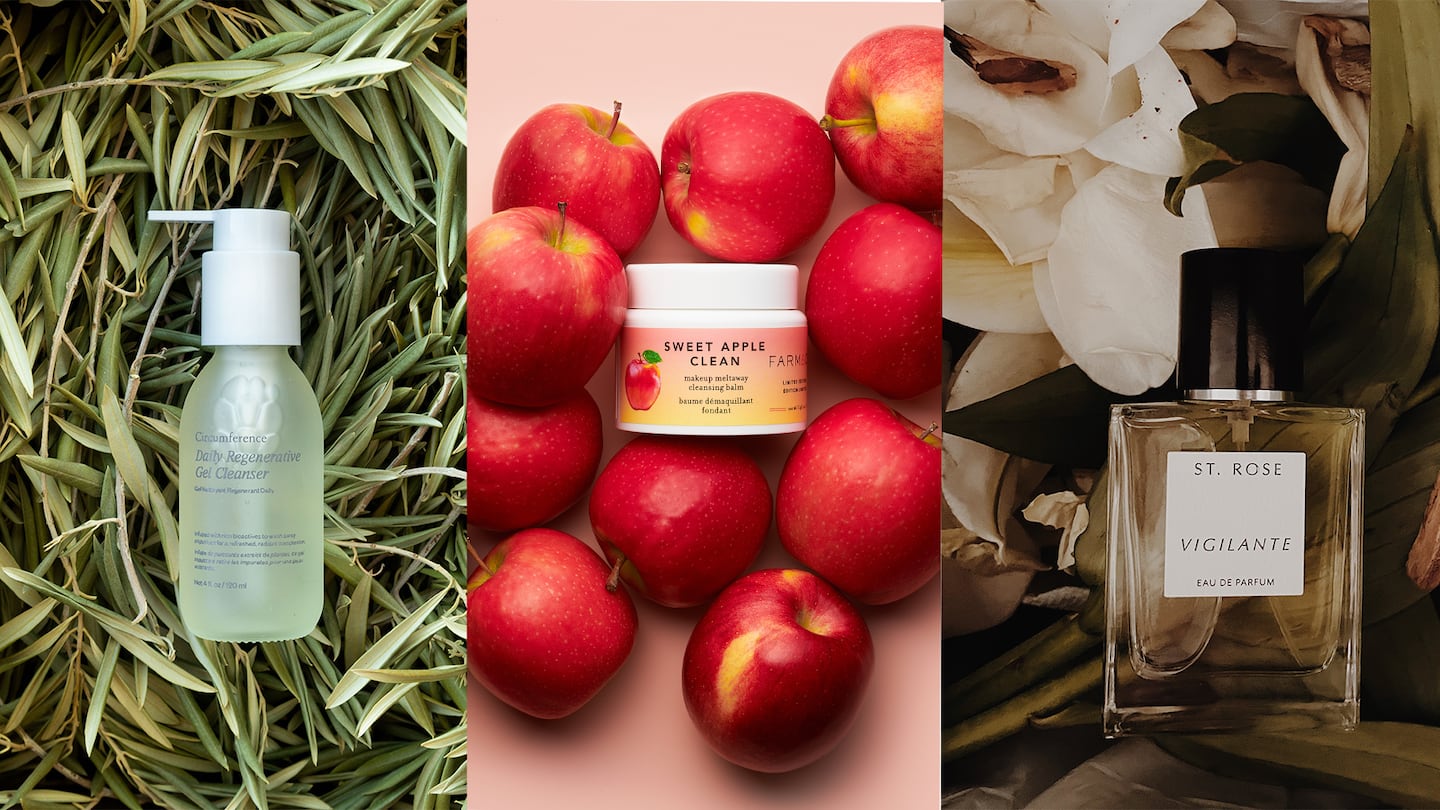
The Business of Fashion
Agenda-setting intelligence, analysis and advice for the global fashion community.

Agenda-setting intelligence, analysis and advice for the global fashion community.

Belinda Smith has always used natural ingredients in products for her fragrance brand St. Rose, founded in 2018. But in 2020, in developing the perfume “Vigilante,” she went a step further and incorporated upcycled ingredients, including wood shavings from Moroccan cabinetry and already-pressed rose petals, which both had been destined for the trash.
The fragrance ended up a Fragrance Foundation Indie Fragrance of the Year Awards finalist, an accolade, that Smith said, showed her it was possible to create a luxury fragrance out of waste. The industry agrees: St. Rose is set to launch at Bergdorf Goodman this week.
“If we can be luxury and we can use these really cool ‘trash’ ingredients, let’s keep pushing this and see what we can do to keep raising the bar,” said Smith.
Smith’s experimentation with “upcycling” — the reuse of waste and byproducts — is an established force in fashion and a growing one in beauty. Audrey Depraeter-Montacel, managing director and beauty lead at Accenture, said that before Covid, much of upcycling in beauty was characterised by one-off or small scale projects. But post-Covid, it’s growing. Though the space is still too fresh for substantial industry-wide data, products have found mainstream success: skin care brand Circumference’s upcycled daily regenerative cleanser has become one of the brand’s top products, and clean skin care label Farmacy’s upcycled apple clean cleansing balm drove more than $500,000 in sales post-launch and a sell through of 9,000 units at within the first 30 days at Sephora.
ADVERTISEMENT
Beauty brands — particularly start-ups — realise it’s not enough to just have sustainable packaging or “clean” ingredients.
“We should be grateful for the small companies which have been brave enough to launch something that was not necessarily on the market in the beginning and really have helped move the market,” said Depraeter-Montacel.
But the reasons for beauty’s slower upcycling uptake still exist: brands are still figuring out supply chains and how to work with upcycled ingredients. As well, a prior lack of investment in the space has meant that there’s an absence in technology and regulatory headaches that pose hurdles to brands hoping to experiment. To enter the space, brands must navigate those challenges.
Manufacturing Friction
Upcycling has had an easier entry into fashion, likely because upcycling fashion is more clear-cut: clothes or fabrics are reusable. The challenge in beauty is that makeup and skin care products aren’t.
As such, upcycling beauty means utilising waste from other industries — the food industry being the primary potential source. But because the space is still in its infancy, brands must forge those relationships on their own.
“There isn’t a sufficiently developed network of partnerships between the food industry and the beauty industry, so there’s a challenge to try to connect them,” said Ana Ledesma, an officer at Natrue, an international natural cosmetics association that provides guidance on regulations.
Crafting not only those relationships, but also developing sourcing and manufacturing processes, is a heavy lift for brands, and may overpower some of upcycling’s cost-saving benefits, which allows brands to utilise another industry’s trash at a discounted or free rate rather than paying for pricey ingredients. (A company might, for example, cut a deal with local coffee shops to dispose of their old coffee grinds and then incorporate those grinds into a product.) But there is investment required on the brands’ part because infrastructure and technology necessary for wide-scale upcycling in beauty are still being built, and industry standards require rigorous testing, particularly in international markets.
ADVERTISEMENT
“If I give you coffee grinds, then you have to transform that into a skincare, a beauty cream, or any beauty product — there’s a lot of research,” said Depraeter-Montacel. “In the beginning, you have to put the money on the table to make it happen.”
Even if a brand is willing to invest, others must be willing to do so as well. Skin care brand Circumference, for example, launched its Waste-Not Sourcing initiative in 2020 to fuel partnerships with agricultural producers to use their byproducts in their assortment. But before even beginning the development process for its first upcycled product, Chris Young, Circumference’s chief operating officer and head of sustainability, cited trouble getting suppliers on board, because they often didn’t understand that something typically considered as waste could have commercial value. To find new partnerships, Circumference created a case study showcasing its work with its first partner, Bedell Cellars, a source for grape leaves to create its Active Restorative Moisturizing Cream.
Working with so many unknowns requires flexibility to be built into a brands’ model. Young says Circumference often develops products at the same time as it sources ingredients.
“They actually influence each other quite a bit,” he said. “Depending on how test results from the ingredient analysis go, that will affect how we think about the actual product itself, and so that can get a little bit complicated because sometimes it has us rethink our formulation.”
Messaging With Waste
Upcycling ingredients poses not only logistical challenges, but marketing ones as well. To sell upcycled products, they must feel at home with a brand’s overall message, said Depraeter-Montacel.
At Farmacy, Poppova said she thinks about writing a story when making formulations, “looking for multifunctional ingredients that do more than just one thing,” which plays into the brand’s message, which is focused on “clean” skin care.
“It’s an all around very rigorous process,” said Kseniya Poppova, Farmacy’s head of research and development. “It’s not so easy to just launch a product tomorrow, it takes effort to make sure there’s aesthetically beautiful, quality products that deliver what the consumer wants and do not cause any adverse reactions.”
ADVERTISEMENT
Farmacy, St. Rose and Circumference all credit the success of their upcycled products in part with their brand positioning around sustainability.
“Sustainability has become extremely convoluted,” said Young. “With waste-not sourcing, the transparency is actually ingrained in this. We can point our consumers to the exact farm, or the exact partner, and say ‘this is where we get our ingredients from and this is why we’re sourcing it and this is why it’s sustainable.”
The Future of Upcycled Beauty
Despite the challenges, Depraeter-Montacel remains optimistic that upcycling has a future as a widely-used, mostly-sustainable practice in the industry. As experimentation continues, companies will find new methods for upcycling that will offer more efficient ways to get in on the practice.
But brands that want to begin using upcycled ingredients will still have to consider if it makes long-term financial sense for their brand. They may have to invest more heavily in research and development, and even rethink their structure or talent strategies to make room for sourcing and handling experts. It’s an upfront effort — but that could set them up for more sustained profitability later down the line.
For practices to be honed so that new techniques can be discovered and later, scaled, Ledesma says it is brands with more capital and capabilities that will really push the industry. She suggests that until larger brands buy into upcycling, it will be hard for the space to fully mature.
“It’s very important that there is an intention of the big leaders of the cosmetics sector to push for these kind of changes … Once these big companies get on board the upcycling train, I think there will be a bigger wave of action,” said Ledesma.

Joan Kennedy is Editorial Associate at The Business of Fashion. She is based in New York and covers beauty and marketing.
Request your invitation to attend our annual gathering for leaders shaping the global beauty and wellness industry.
Excitement for its IPO is building, but in order to realise its ambitions, more acquisitions and operational expenses might be required.
In an increasingly crowded space, makeup brands that prioritise natural ingredients are finding new ways to get their message across.
Shana Randhava, Priya Venkatesh, Heela Yang and Robin Tsai will join Imran Amed and Priya Rao to identify the entrepreneurs shaping the future of the beauty industry.